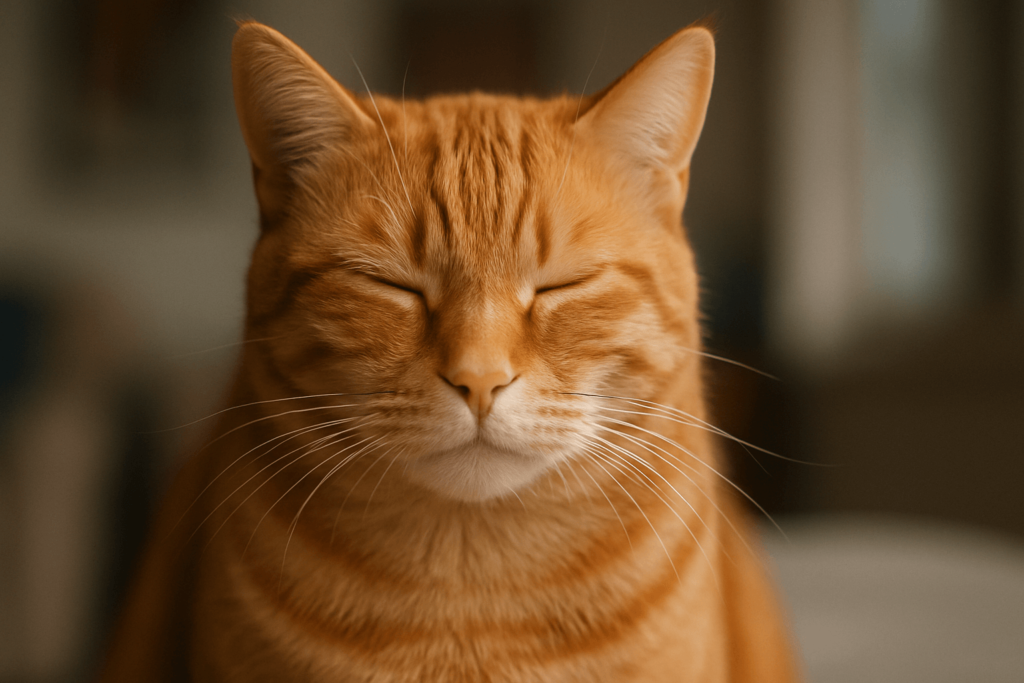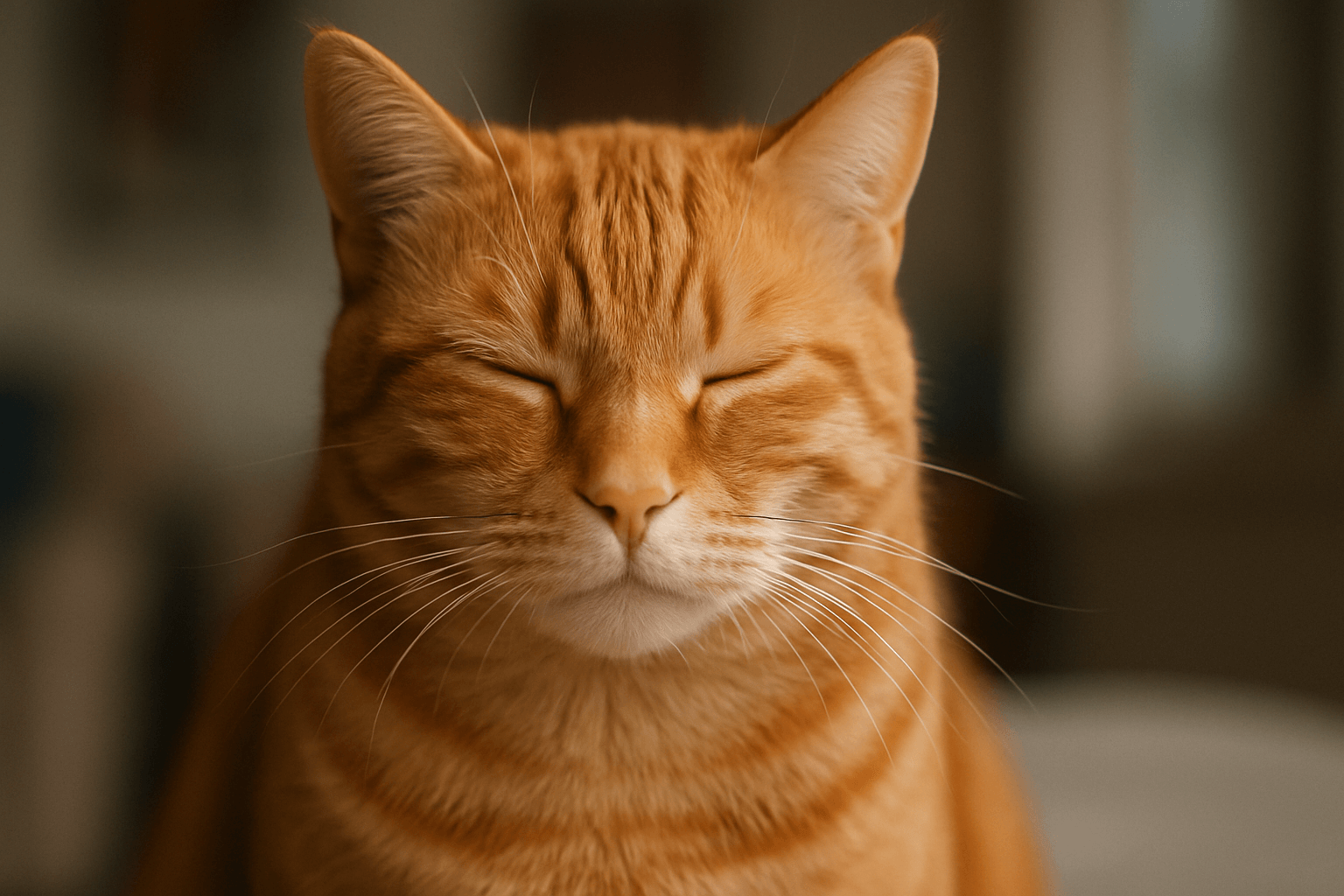Cat Slow Blinking Meaning: What Is Your Cat Trying to Tell You?
Cats are known for their mysterious and subtle ways of communication, often leaving their human companions puzzled. One of the most fascinating behaviors is the slow blink—a gentle, deliberate closing and opening of their eyes. This seemingly simple gesture carries deep meaning and serves as a powerful way for cats to express trust, affection, and comfort. But what exactly does cat slow blinking mean, and how can you interpret this behavior? In this blog post, we’ll explore the science behind slow blinking, its significance in feline communication, and how you can use it to strengthen your bond with your furry friend.
Understanding the Meaning Behind Cat Slow Blinking
Slow blinking is more than just a random behavior—it’s a form of nonverbal communication that reveals a lot about your cat’s emotions and intentions. Here’s what this charming gesture signifies and why it matters.
A Sign of Trust:
Cats view direct eye contact as potentially threatening, so a slow blink indicates they feel safe and secure around you.An Expression of Affection:
Often referred to as a “cat kiss,” slow blinking is a way for cats to show love and affection toward their favorite humans or other animals.A Gesture of Relaxation:
When your cat slow blinks, it’s a sign they’re feeling calm and content in their environment.A Tool for Bonding:
Slow blinking helps build trust and connection between cats and their human companions, strengthening their relationship over time.A Social Signal Among Cats:
Felines also use slow blinking to communicate peacefully with other cats, signaling goodwill and reducing tension.
By recognizing and responding to slow blinking, you can deepen your understanding of your cat’s emotional world and foster a stronger bond.

How to Respond to Your Cat’s Slow Blink
When your cat gives you a slow blink, it’s an invitation to engage in a meaningful interaction. Here’s how you can respond appropriately and enhance your connection.
Return the Slow Blink:
Mimicking your cat’s slow blink communicates back that you understand and reciprocate their feelings of trust and affection.Speak Softly and Calmly:
Pair your slow blink with gentle words or a soothing tone to reinforce positive emotions.Offer Gentle Petting:
After a slow blink, gently stroke your cat’s head or back if they seem receptive, but avoid forcing physical contact.Reward Their Behavior:
Give your cat a small treat or verbal praise to encourage this form of communication and make them feel appreciated.Observe Their Reaction:
Watch how your cat responds to your actions—positive reactions indicate they enjoy the interaction, while withdrawal suggests they need space.
Responding thoughtfully to your cat’s slow blink strengthens mutual trust and creates moments of shared joy.
Check this guide 👉Understanding Cat Eye Language: Best 7 Expert Tips!
Check this guide 👉Cat Eye Irritation: Best 7 Expert Tips!
Check this guide 👉Understanding Cat Eye Mites: Best 7 Expert Tips!
Interpreting Cat Slow Blinks | What NOT to Do During Slow Blinking |
|---|---|
Indicates trust and relaxation | Avoid staring directly into their eyes |
Shows affection (“cat kisses”) | Don’t rush to pick them up immediately |
Helps reduce stress and anxiety | Refrain from loud noises or sudden moves |
Strengthens human-cat bond | Never force interaction if they retreat |
Promotes peaceful social interactions | Avoid ignoring their signals entirely |
Other Ways Cats Communicate Through Eye Contact
While slow blinking is one of the most endearing forms of feline communication, cats also use their eyes in various ways to convey messages. Understanding these nuances provides a fuller picture of their expressive behavior.
Dilated Pupils:
Wide pupils can signal excitement, fear, or aggression, depending on the context and body language.Direct Staring:
Unblinking stares are often perceived as confrontational by cats, so avoid prolonged eye contact unless paired with a slow blink.Half-Closed Eyes:
Cats with half-closed eyes are likely feeling extremely relaxed and comfortable in their surroundings.Rapid Blinking:
Unlike slow blinking, rapid blinking may indicate nervousness or discomfort, especially in unfamiliar situations.Avoidance of Eye Contact:
If a cat avoids looking at you, it could mean they’re feeling shy, scared, or submissive in the current situation.
Paying attention to these subtle cues enhances your ability to decode your cat’s emotions and respond accordingly.
How Slow Blinking Differs Between Cats and Humans
While slow blinking is a universal sign of affection among cats, its interpretation differs slightly when humans join the equation. These distinctions help clarify the unique dynamics of cross-species communication.
Cats View Humans as Part of Their Group:
When a cat slow blinks at you, they’re treating you as a trusted member of their social circle, much like another cat.Humans Use Verbal Cues Too:
Unlike cats, humans often combine slow blinking with verbal affirmations like “I love you” to express affection.Cats Prefer Subtle Gestures:
While humans might hug or cuddle to show love, cats prefer quieter gestures like slow blinking to maintain personal boundaries.Trust Takes Time to Build:
Cats reserve slow blinking for those they deeply trust, whereas humans may display affection more freely, even with strangers.Cultural Differences Matter:
In human cultures, prolonged eye contact can be seen as confrontational, while in cats, it’s the opposite—slow blinking replaces direct stares.
Recognizing these differences fosters empathy and improves communication between species.
Signs Your Cat Feels Safe Around You
Beyond slow blinking, there are several signs that indicate your cat feels safe and secure in your presence. Recognizing these behaviors deepens your understanding of their emotional state.
Purring Loudly:
Purring is often a sign of contentment and relaxation, especially when accompanied by slow blinking.Kneading on Your Lap:
Kneading mimics kitten behavior and shows your cat associates you with comfort and safety.Rubbing Against You:
Cats rub their scent glands against objects (and people) they trust to mark them as part of their territory.Sleeping Near You:
Cats only sleep near individuals they feel completely safe with, making proximity a strong indicator of trust.Exposing Their Belly:
While not always an invitation for petting, exposing their belly signifies vulnerability and trust in your company.
These behaviors collectively paint a picture of a happy, secure cat who views you as family.
How to Encourage Slow Blinking in Shy Cats
If your cat seems hesitant to slow blink, patience and consistency can help encourage this behavior over time. Follow these tips to create a supportive environment.
Create a Calm Space:
Ensure your home has quiet areas where your cat can relax without feeling threatened or overwhelmed.Use Positive Reinforcement:
Reward any attempts at slow blinking with treats or praise to reinforce the behavior positively.Spend Quality Time Together:
Engage in activities your cat enjoys, such as playtime or grooming sessions, to build trust and confidence.Respect Their Boundaries:
Allow your cat to initiate interactions rather than forcing them into uncomfortable situations.Be Patient and Observant:
Some cats take longer to warm up—observe their body language closely to identify subtle changes in their demeanor.
With time and care, even shy cats can learn to express themselves through slow blinking.
Fun Facts About Feline Eye Communication
Cats’ eyes are incredibly expressive and hold many secrets about their inner world. Here are some fun facts about how they communicate using their eyes.
Eyes Are Windows to Emotions:
A cat’s pupils dilate or constrict based on their mood, offering clues about whether they’re excited, fearful, or relaxed.Different Breeds Have Unique Eye Shapes:
Certain breeds, like Siamese cats, have almond-shaped eyes that give them a perpetually alert look, while Persians have rounder, softer eyes.Night Vision Enhances Communication:
Cats’ superior night vision allows them to read subtle facial expressions and movements, even in low light.Eye Color Doesn’t Affect Communication:
While eye color varies widely among cats, it doesn’t influence their ability to communicate through slow blinking or other eye-related behaviors.Blink Speed Varies by Personality:
Just like humans, each cat has its own “blink style,” ranging from slow and deliberate to quick and playful.
These fascinating details highlight the complexity and beauty of feline eye communication.
Frequently Asked Questions About Cat Slow Blinking
Why does my cat slow blink at me?
A slow blink means your cat trusts you, feels safe, and wants to show affection. It’s often called a “cat kiss.”
Should I slow blink back at my cat?
Yes, returning a slow blink strengthens your bond and reassures your cat that you care about them.
Do all cats slow blink?
Most cats use slow blinking, but individual personalities vary—some may do it more frequently than others.
Can dogs slow blink too?
While less common, some dogs exhibit similar behaviors, though it’s not as ingrained in canine communication as it is in feline behavior.
What if my cat doesn’t slow blink?
Not all cats will slow blink regularly, especially if they’re shy or anxious. Respect their boundaries and focus on building trust gradually.
Celebrating the Magic of Cat Slow Blinking
The slow blink is a beautiful reminder of the unique bond humans share with their feline companions. This simple yet profound gesture speaks volumes about trust, love, and mutual respect. By learning to recognize and respond to your cat’s slow blinks, you open the door to deeper connections and enrich your relationship. Whether you’re a seasoned cat owner or new to the joys of feline friendship, embracing the art of slow blinking allows you to appreciate the quiet magic of communicating with your cat. So next time your furry friend gives you a slow blink, take a moment to return the favor—it’s one of the sweetest exchanges you’ll ever share.
Canned Pumpkin for Cat Diarrhea: Best 7 Expert Tips! Natural remedy to firm stools, soothe upset bellies, and support gut health safely.
Can a Cat Give You Scabies? Best 7 Expert Tips! Discover the truth about feline mites, human skin risks, and how to protect yourself—without panic.
Cat Flea vs Human Flea: Best 7 Expert Tips! Discover the truth about bites, species, and how to eliminate infestations for good.
Weird Cat Behaviors: Best 7 Expert Tips! Discover why cats do strange things—and how to understand, not punish, their instincts for a happier home.





